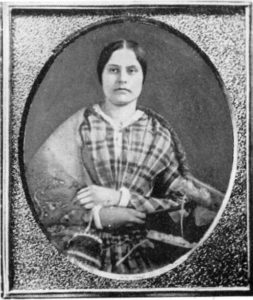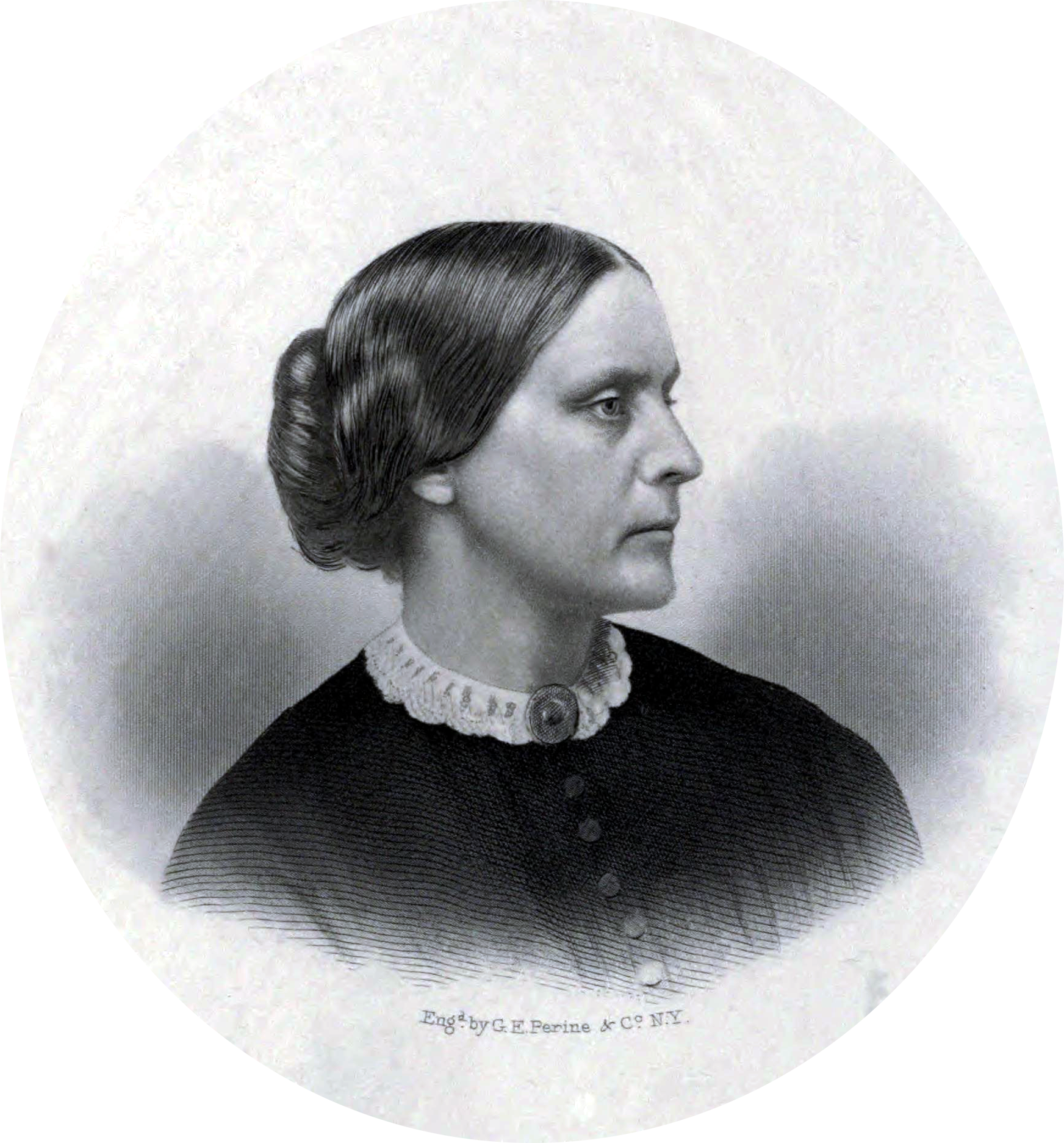Information and Articles About Susan B. Anthony, a women’s rights advocate and one of the famous women in history
Susan B. Anthony Facts
Born
February 15, 1820, Adams, Massachusetts
Died
March 13, 1906, Rochester, New York
Accomplishments
Teacher
Staunch advocate of women’s rights, workers rights, and equality
Pioneer in the women’s suffrage movement
Co-founder of the Women’s State Temperance Society
Co-founder of the Woman’s National Loyal League Co-founder of the National Woman Suffrage Association Publisher of women’s rights newspaper The Revolution
Susan B. Anthony Articles
Explore articles from the HistoryNet archives about Susan B. Anthony
» See all Susan B Anthony Articles

Susan B. Anthony summary: Susan B. Anthony was one of the driving forces of the women’s suffrage movement, a staunch equal rights advocate and social activist. She was deeply self-conscious of her looks and speaking abilities, but because her Quaker upbringing had placed her on equal footing with the male members of the family and encouraged to express herself, she overcame these fears to more effectively fight for equal rights. Wary of not being taken seriously, she rarely smiled in photographs, appearing stern and severe. She spent much of her adult life traveling the country, speaking about equal rights, circulating petitions, and helping to organize local women’s rights and labor organizations. She was the first actual woman printed on a circulating U.S. coin (as opposed to the iconic female figure of Liberty); the Susan B. Anthony dollar coin was minted in 1979–1981 and again in 1999.
Susan Brownel Anthony was born February 15, 1820, to Daniel Anthony and Lucy (Reed) Anthony in Adams, Massachusetts, the second of eight children. The Anthony family was Quaker—her great grandfathers on her father’s side were Adams’ first settlers and founders of the Friends Meeting, a place where Quakers met and gathered in worship. The community believed in morality as a necessary underpinning of society, simplicity, humility, and the equal treatment and opportunity for everyone, regardless of gender or skin color. The Quaker community had a strong tradition of abolition; slavery was abolished in Massachusetts in 1790, but it wasn’t until 1826 that neighboring New York followed suit. In the intervening years, the Quakers in Adams helped fugitive slaves from New York and a few even settled in Adams.
Anthony learned to read at an early age. After the family moved to Battensville, New York, when Anthony was around seven years old, she attended the district public school until the teacher refused to teach her long division. Her father founded a homeschool where she, her sisters and brothers, and neighborhood children were educated. She began teaching at the school but in 1837 enrolled at Deborah Moulson’s Female Seminary in Philadelphia to advance her own education. She only attended it briefly before going back to teaching to help pay her father’s debts; the Panic of 1837 had forced him to declare bankruptcy.
In 1838, she joined the Daughters of Temperance, which focused on the dangers of alcohol and its negative effect on families, and campaigned for stronger liquor laws. She also began to move away from the Quakers and organized religion in general after witnessing hypocritical behavior, such as drinking alcohol, by preachers and member of the community.
Anthony taught in various schools in the early 1840s. While working as a teacher in Canajoharie, New York, she discovered the huge difference in salary for male and female teachers—$10 a month versus $2.50 a month—and joined the teachers’ union to fight for equal wages. Anthony continued to be active in the teachers’ unions even after she stopped teaching and in 1853, at the state teachers’ convention, called for better pay, professional recognition and deeper involvement of women in the union.
In 1845, her family had moved to a farm in Rochester, New York, and in 1849 she joined them to run the farm while her father started an insurance business. She continued her work with the temperance movement while becoming more active in the abolitionist movement, which her father had taken a role in since their time in Adams, Massachusetts. Their farm in Rochester became a meeting place for abolitionists, including Frederick Douglass.
In 1851, Anthony met Elizabeth Cady Stanton at an antislavery meeting in Seneca Falls, New York. Stanton had begun campaigning for women’s rights in 1848 and was already a key figure in the suffrage movement. Although Anthony did not immediately become active in the suffrage movement, she and Stanton became lifelong friends, inspiring each other to fight for change and equality. In September 1852, Anthony gave her first public speech at the National Women’s Rights Convention in Syracuse, New York.
At the 1853 Sons of Temperance state convention in Albany, Anthony was refused the right to speak—she was told that the women had been invited to listen and learn—so she left the meeting to call her own. That same year, she and Stanton founded the Women’s State Temperance Society, which eventually petitioned the New York state legislature to pass a law limiting the sale of liquor. Their petition was rejected on the grounds that the 28,000 signatures on the petition were mainly from women and children. This spurred Anthony and Stanton to focus so intently on the suffrage movement as a means of gaining more political sway that they were harshly criticized and resigned from the society.
Throughout the 1850s and 1860s, Anthony honed her speaking and organizing skills, continuing her involvement with the temperance movement, fighting for equal wages, abolition of slavery and suffrage. In 1856, she became an agent for the American Anti-Slavery society, which involved organizing meetings, speeches, putting up posters, distributing leaflets, and encountering sometimes violent opposition. She dealt with angry mobs and armed threats; objects were thrown at her, she was hung in effigy, and her image was dragged through the streets. She and Stanton also increasingly tied female suffrage and black suffrage together, forming the Woman’s National Loyal League in 1863 to support the Thirteenth Amendment to abolish slavery and campaigning for full citizenship for blacks and women.
In 1868, Anthony started publishing the weekly newspaper The Revolution, with the masthead “THE TRUE REPUBLIC—MEN, THEIR RIGHTS, AND NOTHING MORE; WOMEN, THEIR RIGHTS, AND NOTHING LESS,” which provided a strong counterpoint to the prejudices evident in most other newspapers of the day, arguing for equal rights, suffrage and equal pay. Publishing the paper brought Anthony into contact with women working in the printing trade. She encouraged them and the working women in the sewing trade to form trade unions since they were excluded from men’s trade unions. She was even accused of strikebreaking in 1869 after encouraging New York printers to hire women during a printers strike, having hired women to print The Revolution.
Also in 1869, Anthony and Stanton founded the National Woman Suffrage Association, splitting the suffrage movement into two factions: Anthony and Stanton campaigned for a constitutional amendment for universal suffrage in America while the American Woman Suffrage Association, founded by Lucy Stone, focused on winning the right to vote state-by-state. Anthony appeared before every Congress from 1869 to 1906, the year of her death, to ask for passage of a women’s suffrage amendment.
Following the adoption of the Fourteenth Amendment in 1868—which stated, “All persons born or naturalized in the United States, and subject to the jurisdictions thereof, are citizens of the United States and the State wherein they reside” and prohibited limiting the rights of any citizen—Anthony argued that it gave women the constitutional right to vote in federal elections and planned on voting in the 1872 presidential election. Anthony and 14 other women were arrested for violating election laws in Rochester, New York, although only Anthony was indicted, in January 1873. In the four months between her indictment and trial, 52-year-old Anthony traveled to towns throughout Monroe County, New York, giving a talk titled “Is it a Crime for a Citizen of the United States to Vote?” to garner support for her position.
At her trial in June 1873, following arguments from both the prosecution and defense, Judge Ward Hunt read an opinion, presumably prepared before the trial, concluding that Anthony was guilty and ending the opinion with “the jury should be directed to find a verdict of guilty.” Just before sentencing the next day, Hunt provided Anthony with the opportunity to speak, during which she argued, as her lawyer had, that her rights as a citizen had been violated. Hunt fined her $100 and the cost of the prosecution, which Anthony refused to pay, saying “not a penny shall go to this unjust claim.” Judge Hunt ended the trial by announcing, “Madam, the Court will not order you committed until the fine is paid,” preventing her from appealing to a higher court unless she paid the fine—she never did.
In 1887, the two suffrage organizations came back together, forming the National American Woman Suffrage Association with Stanton and Anthony serving as its first two presidents. This organization combined the strategies of its two predecessors—fighting for suffrage at both a state and federal level. This organization was finally successful in 1920 with the passage of the Nineteenth Amendment, 14 years after Anthony’s death in 1906.
In 1900, at age 80, Anthony retired as president of the National American Woman Suffrage Association. She presided over the International Council of Women in Berlin and became honorary president of the International Woman Suffrage Alliance. She died March 13, 1906 at her home on Madison Street in Rochester, New York. In her last public address before her death, she spoke the now famous words: “Failure is impossible.”

